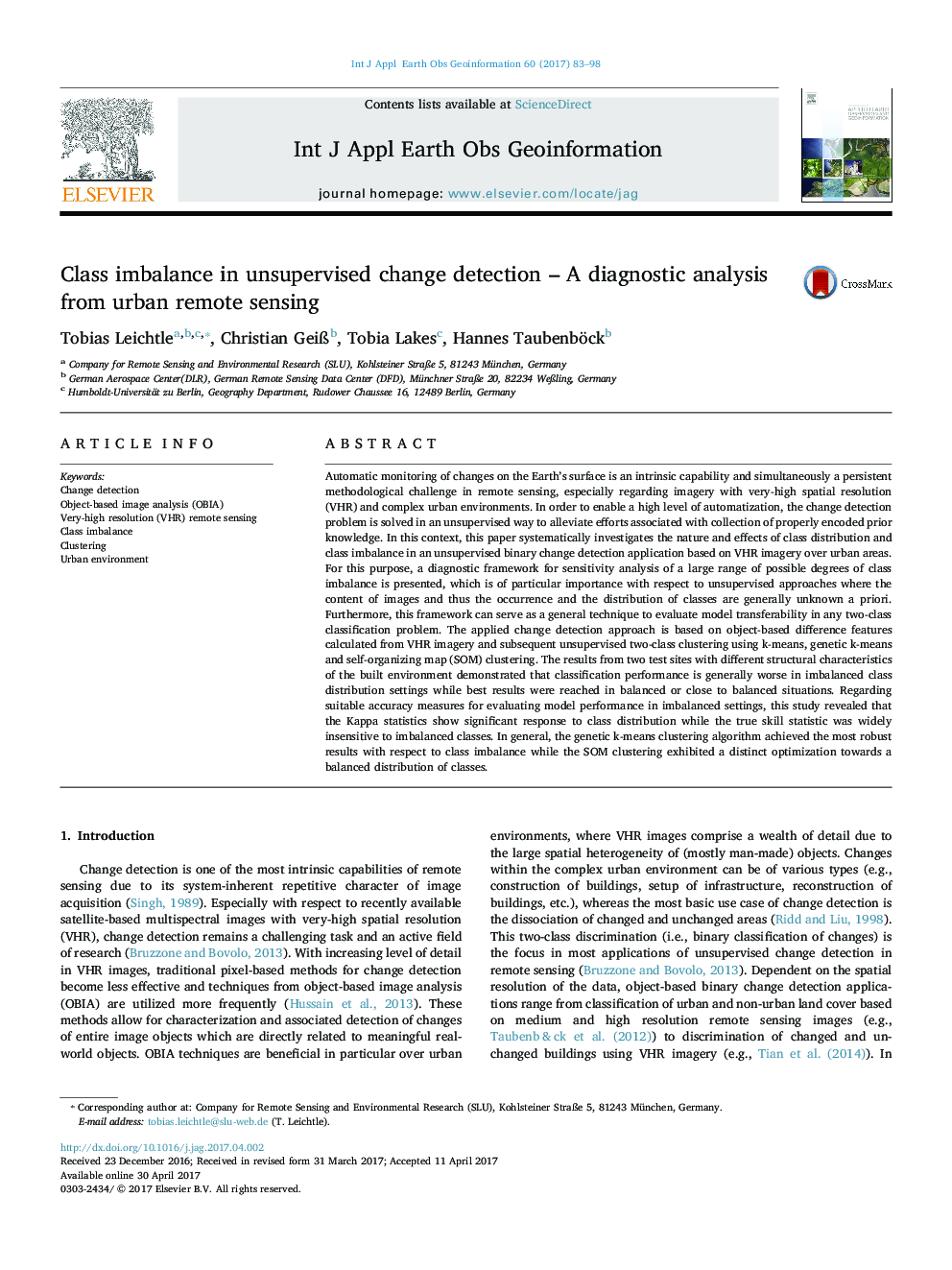| Article ID | Journal | Published Year | Pages | File Type |
|---|---|---|---|---|
| 5755516 | International Journal of Applied Earth Observation and Geoinformation | 2017 | 16 Pages |
Abstract
Automatic monitoring of changes on the Earth's surface is an intrinsic capability and simultaneously a persistent methodological challenge in remote sensing, especially regarding imagery with very-high spatial resolution (VHR) and complex urban environments. In order to enable a high level of automatization, the change detection problem is solved in an unsupervised way to alleviate efforts associated with collection of properly encoded prior knowledge. In this context, this paper systematically investigates the nature and effects of class distribution and class imbalance in an unsupervised binary change detection application based on VHR imagery over urban areas. For this purpose, a diagnostic framework for sensitivity analysis of a large range of possible degrees of class imbalance is presented, which is of particular importance with respect to unsupervised approaches where the content of images and thus the occurrence and the distribution of classes are generally unknown a priori. Furthermore, this framework can serve as a general technique to evaluate model transferability in any two-class classification problem. The applied change detection approach is based on object-based difference features calculated from VHR imagery and subsequent unsupervised two-class clustering using kâmeans, genetic k-means and self-organizing map (SOM) clustering. The results from two test sites with different structural characteristics of the built environment demonstrated that classification performance is generally worse in imbalanced class distribution settings while best results were reached in balanced or close to balanced situations. Regarding suitable accuracy measures for evaluating model performance in imbalanced settings, this study revealed that the Kappa statistics show significant response to class distribution while the true skill statistic was widely insensitive to imbalanced classes. In general, the genetic k-means clustering algorithm achieved the most robust results with respect to class imbalance while the SOM clustering exhibited a distinct optimization towards a balanced distribution of classes.
Keywords
Related Topics
Physical Sciences and Engineering
Earth and Planetary Sciences
Computers in Earth Sciences
Authors
Tobias Leichtle, Christian GeiÃ, Tobia Lakes, Hannes Taubenböck,
